David Salinas
Open-sci-ref-0.01: open and reproducible reference baselines for language model and dataset comparison
Sep 10, 2025Abstract:We introduce open-sci-ref, a family of dense transformer models trained as research baselines across multiple model (0.13B to 1.7B parameters) and token scales (up to 1T) on 8 recent open reference datasets. Evaluating the models on various standardized benchmarks, our training runs set establishes reference points that enable researchers to assess the sanity and quality of alternative training approaches across scales and datasets. Intermediate checkpoints allow comparison and studying of the training dynamics. The established reference baselines allow training procedures to be compared through their scaling trends, aligning them on a common compute axis. Comparison of open reference datasets reveals that training on NemoTron-CC HQ consistently outperforms other reference datasets, followed by DCLM-baseline and FineWeb-Edu. In addition to intermediate training checkpoints, the release includes logs, code, and downstream evaluations to simplify reproduction, standardize comparison, and facilitate future research.
Improving LLM-based Global Optimization with Search Space Partitioning
May 27, 2025Abstract:Large Language Models (LLMs) have recently emerged as effective surrogate models and candidate generators within global optimization frameworks for expensive blackbox functions. Despite promising results, LLM-based methods often struggle in high-dimensional search spaces or when lacking domain-specific priors, leading to sparse or uninformative suggestions. To overcome these limitations, we propose HOLLM, a novel global optimization algorithm that enhances LLM-driven sampling by partitioning the search space into promising subregions. Each subregion acts as a ``meta-arm'' selected via a bandit-inspired scoring mechanism that effectively balances exploration and exploitation. Within each selected subregion, an LLM then proposes high-quality candidate points, without any explicit domain knowledge. Empirical evaluation on standard optimization benchmarks shows that HOLLM consistently matches or surpasses leading Bayesian optimization and trust-region methods, while substantially outperforming global LLM-based sampling strategies.
EquiTabPFN: A Target-Permutation Equivariant Prior Fitted Networks
Feb 10, 2025Abstract:Recent foundational models for tabular data, such as TabPFN, have demonstrated remarkable effectiveness in adapting to new tasks through in-context learning. However, these models overlook a crucial equivariance property: the arbitrary ordering of target dimensions should not influence model predictions. In this study, we identify this oversight as a source of incompressible error, termed the equivariance gap, which introduces instability in predictions. To mitigate these issues, we propose a novel model designed to preserve equivariance across output dimensions. Our experimental results indicate that our proposed model not only addresses these pitfalls effectively but also achieves competitive benchmark performance.
The Tabular Foundation Model TabPFN Outperforms Specialized Time Series Forecasting Models Based on Simple Features
Jan 06, 2025Abstract:Foundation models have become popular in forecasting due to their ability to make accurate predictions, even with minimal fine-tuning on specific datasets. In this paper, we demonstrate how the newly released regression variant of TabPFN, a general tabular foundation model, can be applied to time series forecasting. We propose a straightforward approach, TabPFN-TS, which pairs TabPFN with simple feature engineering to achieve strong forecasting performance. Despite its simplicity and with only 11M parameters, TabPFN-TS outperforms Chronos-Mini, a model of similar size, and matches or even slightly outperforms Chronos-Large, which has 65-fold more parameters. A key strength of our method lies in its reliance solely on artificial data during pre-training, avoiding the need for large training datasets and eliminating the risk of benchmark contamination.
Mamba4Cast: Efficient Zero-Shot Time Series Forecasting with State Space Models
Oct 12, 2024
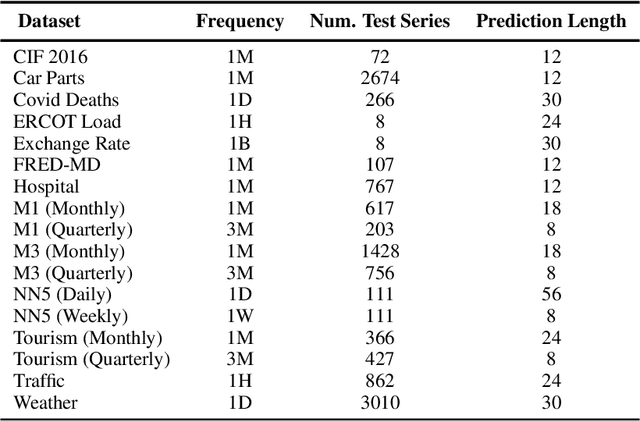
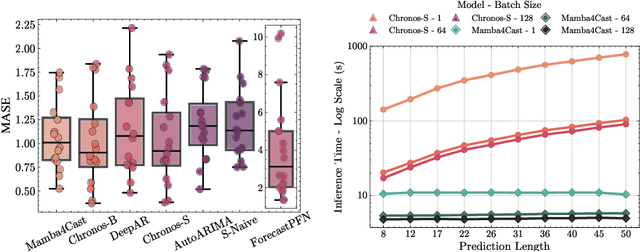
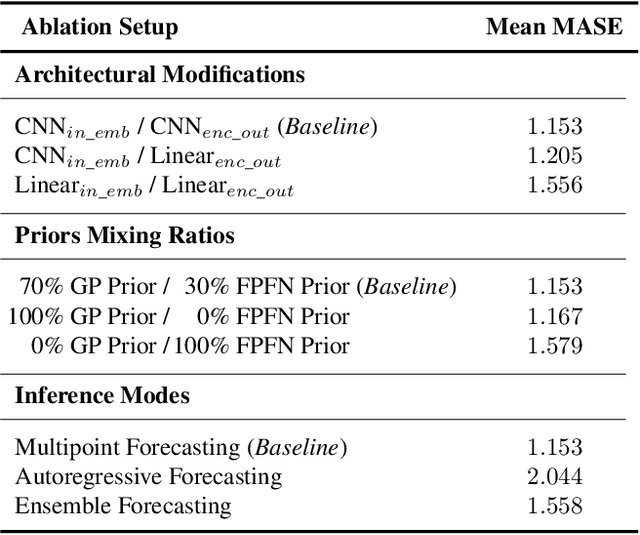
Abstract:This paper introduces Mamba4Cast, a zero-shot foundation model for time series forecasting. Based on the Mamba architecture and inspired by Prior-data Fitted Networks (PFNs), Mamba4Cast generalizes robustly across diverse time series tasks without the need for dataset specific fine-tuning. Mamba4Cast's key innovation lies in its ability to achieve strong zero-shot performance on real-world datasets while having much lower inference times than time series foundation models based on the transformer architecture. Trained solely on synthetic data, the model generates forecasts for entire horizons in a single pass, outpacing traditional auto-regressive approaches. Our experiments show that Mamba4Cast performs competitively against other state-of-the-art foundation models in various data sets while scaling significantly better with the prediction length. The source code can be accessed at https://github.com/automl/Mamba4Cast.
GAMformer: In-Context Learning for Generalized Additive Models
Oct 06, 2024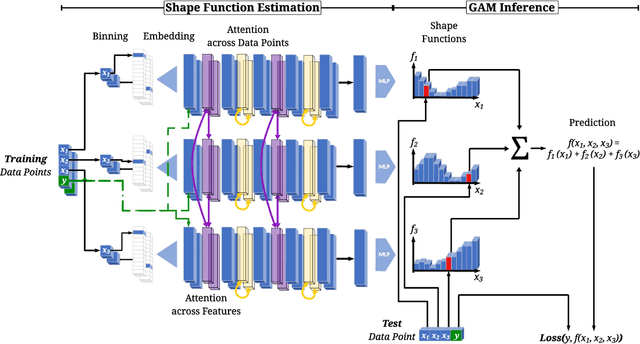
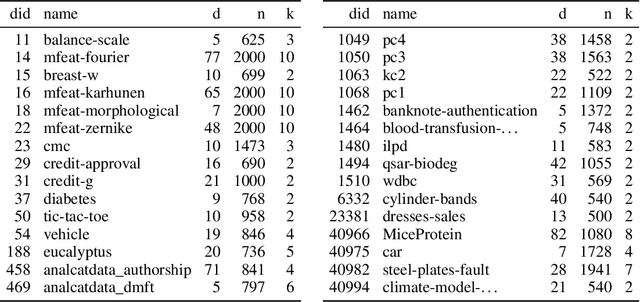


Abstract:Generalized Additive Models (GAMs) are widely recognized for their ability to create fully interpretable machine learning models for tabular data. Traditionally, training GAMs involves iterative learning algorithms, such as splines, boosted trees, or neural networks, which refine the additive components through repeated error reduction. In this paper, we introduce GAMformer, the first method to leverage in-context learning to estimate shape functions of a GAM in a single forward pass, representing a significant departure from the conventional iterative approaches to GAM fitting. Building on previous research applying in-context learning to tabular data, we exclusively use complex, synthetic data to train GAMformer, yet find it extrapolates well to real-world data. Our experiments show that GAMformer performs on par with other leading GAMs across various classification benchmarks while generating highly interpretable shape functions.
ARLBench: Flexible and Efficient Benchmarking for Hyperparameter Optimization in Reinforcement Learning
Sep 27, 2024


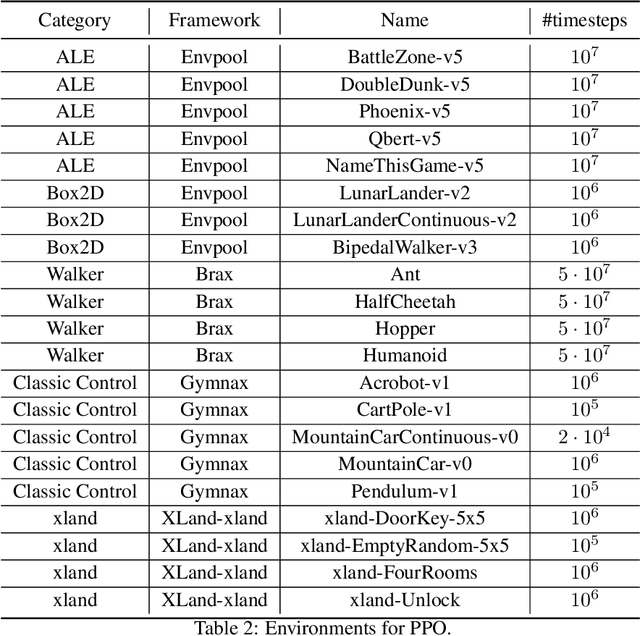
Abstract:Hyperparameters are a critical factor in reliably training well-performing reinforcement learning (RL) agents. Unfortunately, developing and evaluating automated approaches for tuning such hyperparameters is both costly and time-consuming. As a result, such approaches are often only evaluated on a single domain or algorithm, making comparisons difficult and limiting insights into their generalizability. We propose ARLBench, a benchmark for hyperparameter optimization (HPO) in RL that allows comparisons of diverse HPO approaches while being highly efficient in evaluation. To enable research into HPO in RL, even in settings with low compute resources, we select a representative subset of HPO tasks spanning a variety of algorithm and environment combinations. This selection allows for generating a performance profile of an automated RL (AutoRL) method using only a fraction of the compute previously necessary, enabling a broader range of researchers to work on HPO in RL. With the extensive and large-scale dataset on hyperparameter landscapes that our selection is based on, ARLBench is an efficient, flexible, and future-oriented foundation for research on AutoRL. Both the benchmark and the dataset are available at https://github.com/automl/arlbench.
* Accepted at the 17th European Workshop on Reinforcement Learning
Deep Non-Parametric Time Series Forecaster
Dec 22, 2023



Abstract:This paper presents non-parametric baseline models for time series forecasting. Unlike classical forecasting models, the proposed approach does not assume any parametric form for the predictive distribution and instead generates predictions by sampling from the empirical distribution according to a tunable strategy. By virtue of this, the model is always able to produce reasonable forecasts (i.e., predictions within the observed data range) without fail unlike classical models that suffer from numerical stability on some data distributions. Moreover, we develop a global version of the proposed method that automatically learns the sampling strategy by exploiting the information across multiple related time series. The empirical evaluation shows that the proposed methods have reasonable and consistent performance across all datasets, proving them to be strong baselines to be considered in one's forecasting toolbox.
TabRepo: A Large Scale Repository of Tabular Model Evaluations and its AutoML Applications
Nov 06, 2023Abstract:We introduce TabRepo, a new dataset of tabular model evaluations and predictions. TabRepo contains the predictions and metrics of 1206 models evaluated on 200 regression and classification datasets. We illustrate the benefit of our datasets in multiple ways. First, we show that it allows to perform analysis such as comparing Hyperparameter Optimization against current AutoML systems while also considering ensembling at no cost by using precomputed model predictions. Second, we show that our dataset can be readily leveraged to perform transfer-learning. In particular, we show that applying standard transfer-learning techniques allows to outperform current state-of-the-art tabular systems in accuracy, runtime and latency.
Obeying the Order: Introducing Ordered Transfer Hyperparameter Optimisation
Jun 29, 2023Abstract:We introduce ordered transfer hyperparameter optimisation (OTHPO), a version of transfer learning for hyperparameter optimisation (HPO) where the tasks follow a sequential order. Unlike for state-of-the-art transfer HPO, the assumption is that each task is most correlated to those immediately before it. This matches many deployed settings, where hyperparameters are retuned as more data is collected; for instance tuning a sequence of movie recommendation systems as more movies and ratings are added. We propose a formal definition, outline the differences to related problems and propose a basic OTHPO method that outperforms state-of-the-art transfer HPO. We empirically show the importance of taking order into account using ten benchmarks. The benchmarks are in the setting of gradually accumulating data, and span XGBoost, random forest, approximate k-nearest neighbor, elastic net, support vector machines and a separate real-world motivated optimisation problem. We open source the benchmarks to foster future research on ordered transfer HPO.
 Add to Chrome
Add to Chrome Add to Firefox
Add to Firefox Add to Edge
Add to Edge